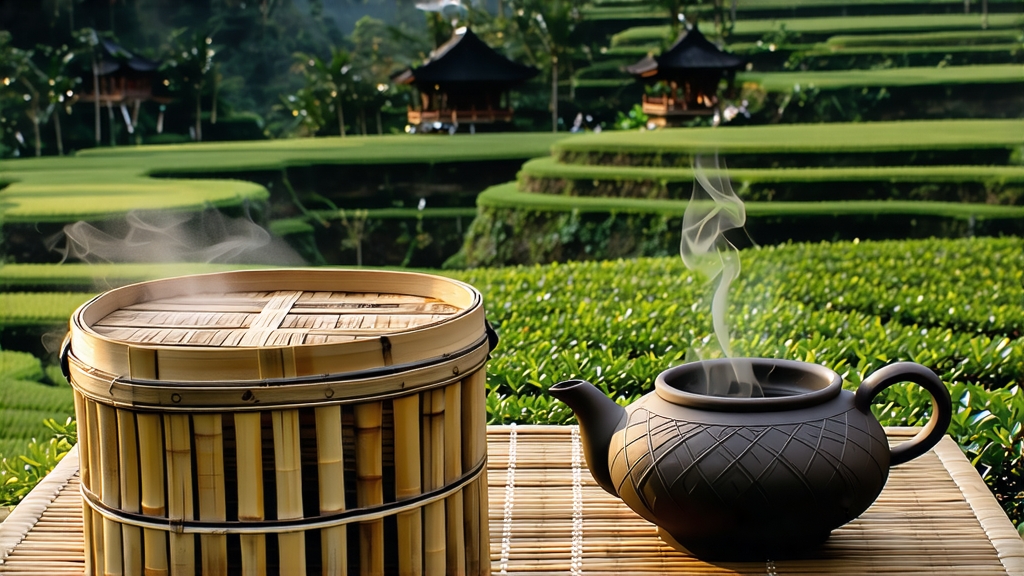
High among the perennially cloud-capped Meng Ding Mountains of Ya’an, Sichuan, a tea once reserved for emperors still unfurls its down-covered buds each early April. Meng Ding Huang Ya—literally “Meng Ding Yellow Bud”—is the least-known yet most aristocratic member of China’s small yellow-tea family. While green tea dominates export shelves and dark pu-erh fills auction catalogs, yellow tea occupies a slender niche whose very scarcity is tied to a curing choreography so exacting that only a handful of masters still attempt it. To understand Meng Ding Huang Ya is to step into a micro-climate where altitude, monsoon memory, and human judgment converge in a cup that smells of warm chestnut, fresh corn silk, and mountain orchid.
Historical whispers place the tea at the Tang court (7th–10th c.), when Daoist monks on Meng Ding’s summit presented the first plucking to the throne as “immortal dew.” By Song times it was codified as one of the earliest tribute teas, transported by fast horse and bamboo-hooped palanquin along the ancient Tea-Horse Road. A Ming dynasty edict fixed the picking window at five days around Qingming, when the bud stands just longer than a wheat grain but still refuses to open. Imperial demand vanished with the fall of the Qing, and with it the yellowing technique almost disappeared; only in 1959 did the Sichuan Tea Research Institute reconstitute the process from fragmentary court diaries and one surviving octogenarian monk. Today fewer than twenty households on the northern escarpment are certified to produce the authentic grade, yielding perhaps 600 kg a year—less than a single morning’s output of a modern Longjing factory.
The cultivar itself is a local variant of the ancient Sichuan small-leaf population, known to botanists as Camellia sinensis var. sinensis ‘Mengzi’. Grown between 800 m and 1,400 m, the bushes sit in a perpetual swirl of evaporating cloud that shortens ultraviolet exposure and thickens the leaf’s amino acid quilt. Night temperatures can drop 12 °C within an hour, forcing the plant to store extra sucrose in its apical bud, the chemical precursor to the tea’s signature maltose sweetness. Soils are Devonian sandstone leached by acidic rain, porous enough to drain the monsoon yet retentive enough to keep the shallow roots mist-fed even during winter drought. No agrochemicals are permitted inside the core 300-hectare heritage zone; instead, rows of aromatic Litsea cubeba shrubs attract lacewings that control leafhoppers, while free-range Sichuan partridges scratch for cutworms beneath the canopy.
Plucking begins at dawn when surface tension makes the bud snap cleanly without bruising. The standard is “one bud with one leaf just released from the sheath,” a pick so tiny that a skilled gatherer fills only 250 g per hour. Leaves are deposited in shallow bamboo trays to prevent compression; any pile deeper than 4 cm starts enzymatic browning that would later stain the yellow liquor. Within two hours the trays are carried down 800 stone steps to the village courtyard where the true yellowing alchemy begins.
The first phase is a gentle kill-green that locals call “kissing the fire.” Buds are tossed by hand in a wok maintained at 130 °C for exactly 90 seconds, just long enough to rupture the cuticular wax and denature polyphenol oxidase while leaving the central core enzymatically alive. A master judges readiness by ear: when the sizzle sharpens from alto to soprano and the leaf’s spine emits a faint sesame note, it is time to withdraw. The half-fixed buds are then wrapped in steamed cotton cloth and placed inside a bamboo steam chamber whose temperature drifts slowly from 55 °C to 40 °C over 40 minutes. This is the “menhuang” (闷黄) stage, the hallmark of all yellow teas, during which residual moisture and heat coax a slow, non-enzymatic oxidation that shifts chlorophyll toward pheophytin and converts catechins into theaflavins, yielding the straw-gold color and rounded mouthfeel impossible in green tea. The bundle is opened every ten minutes to release carbonic gas, then re-wrapped with a subtle tightening that molds the bud into its final needle shape. Three such cycles—each cooler and longer than the last—are